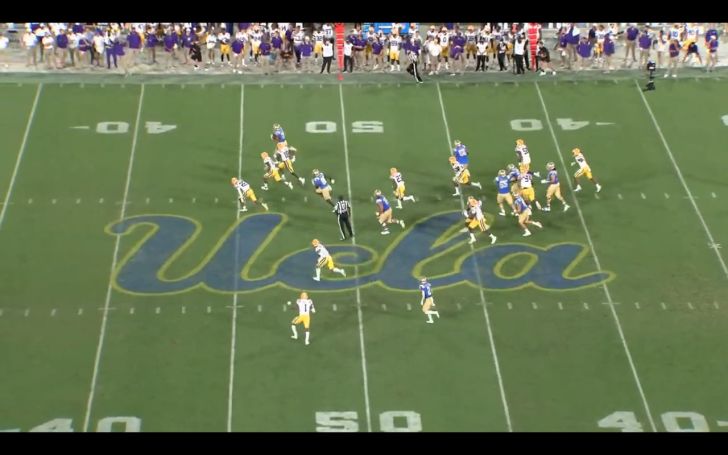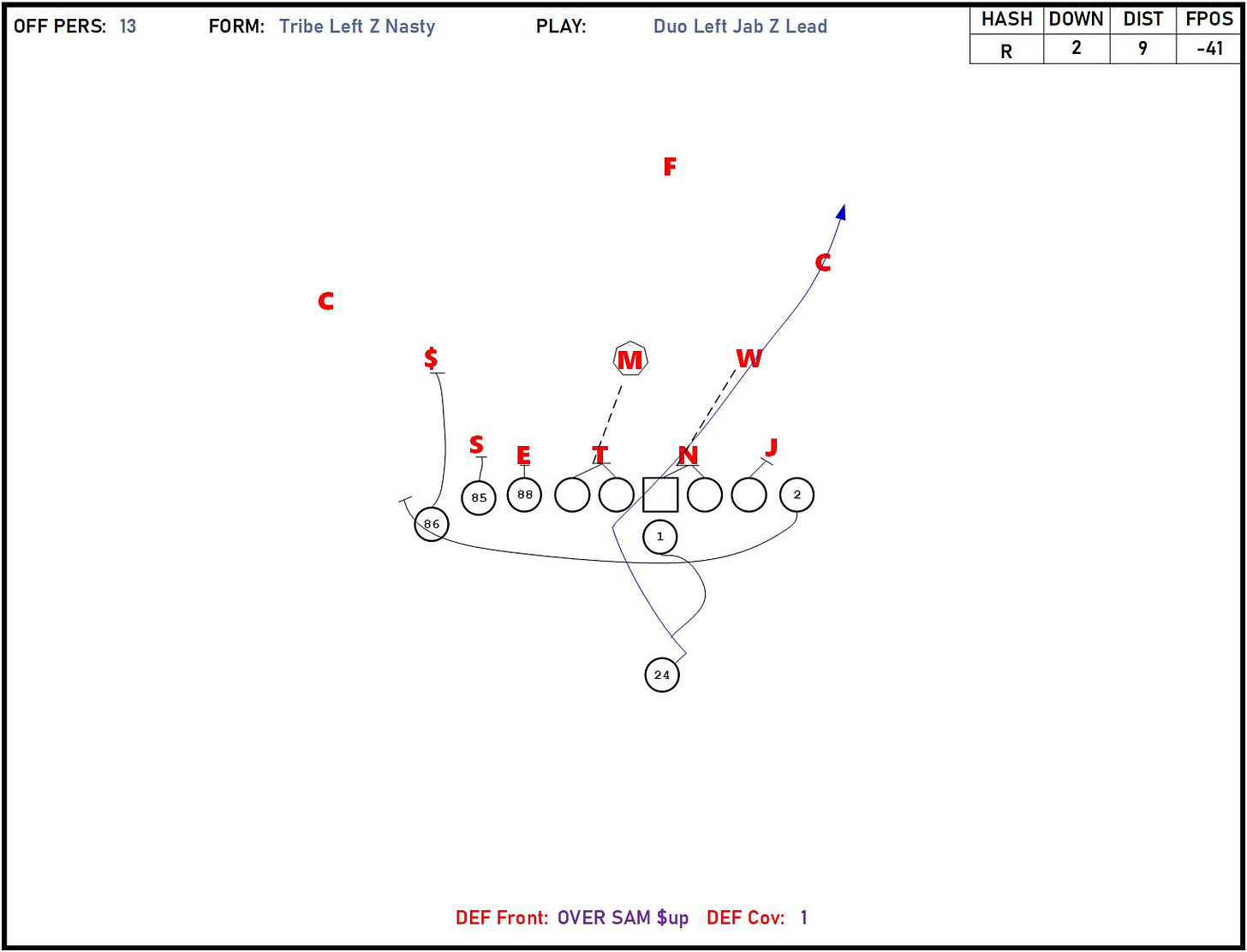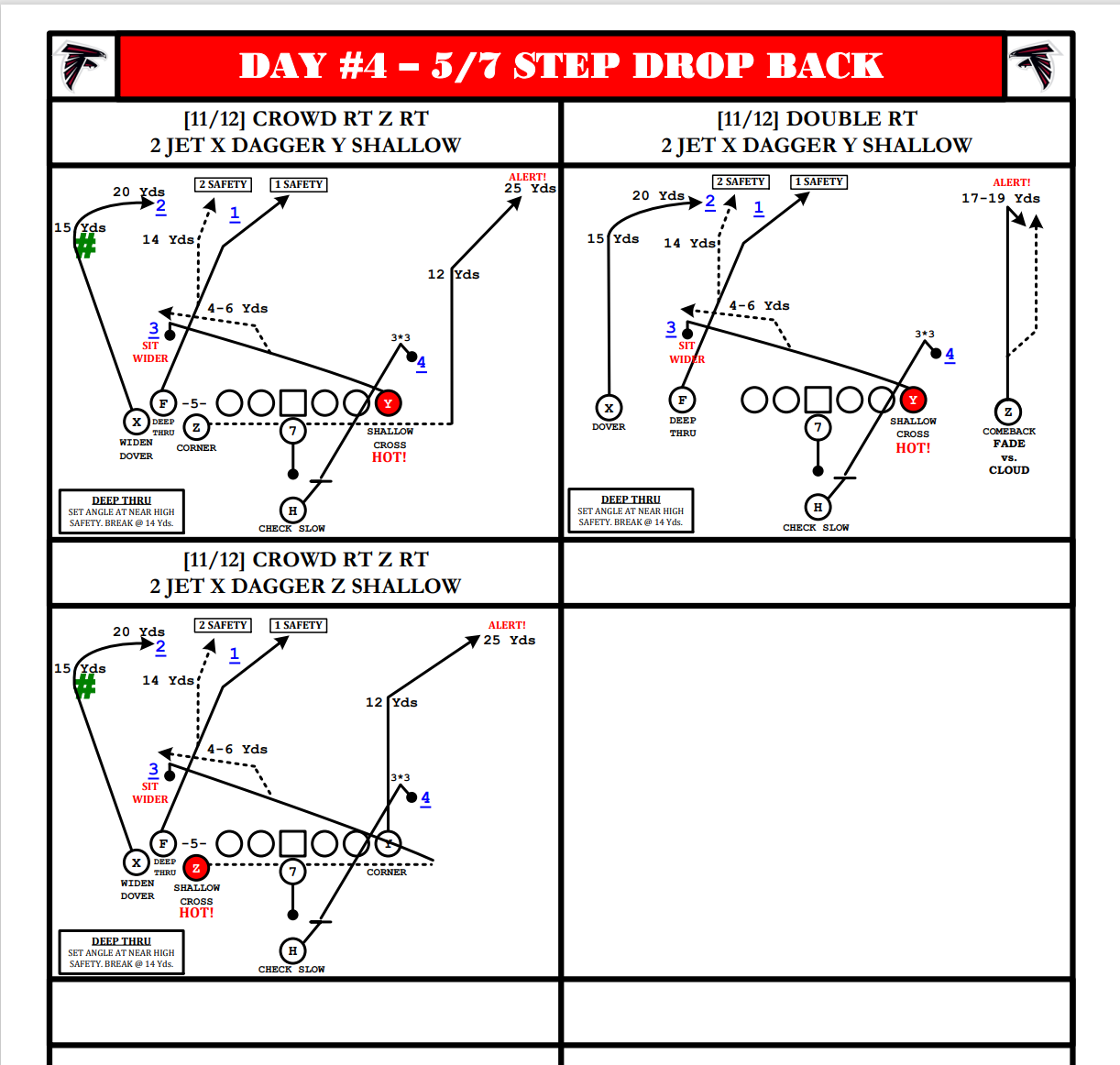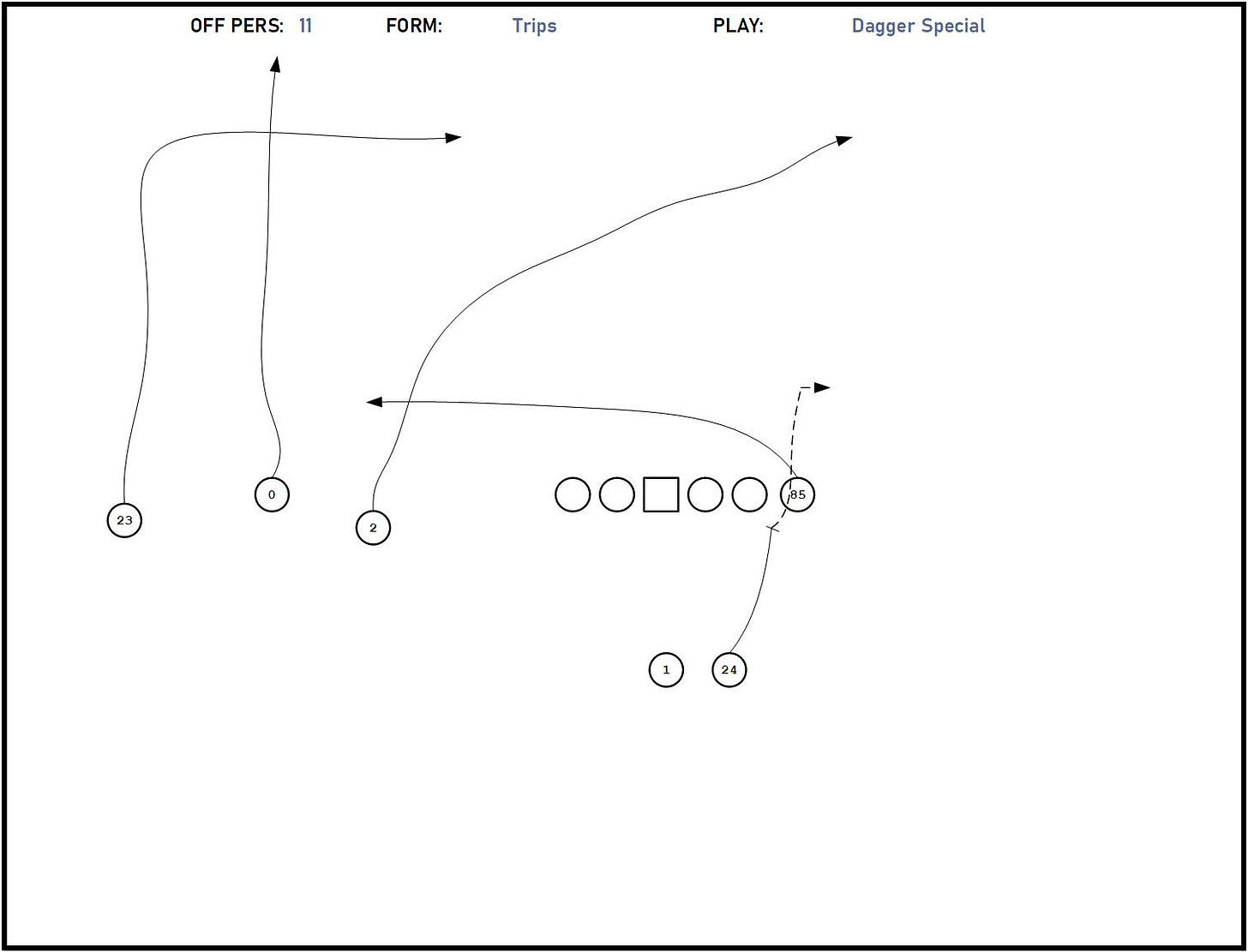Recently, I watched The Last Duel, and have since felt an urge to learn more about the Medieval Age. Blame it on the Baader-Meinhof theory, but in reviewing the film of the UCLA game vs. LSU, I was transported to the 14th Century. Using historically proven battle tactics, relics, and even daggers, UCLA dominated the Tigers.
Perception, or one’s point of view can have a great impact on how they respond to a stimulus. This is exasperated when they have not been given the tools to look beyond their frame of reference. Even worse, when they make a hasty, emotional decision. Without getting too deep into the plot of the movie, The Last Duel portrays three perspectives of an event culminating in a deadly conflict. In football, a unit MUST be able to quickly internalize the information presented by their opponent. To be successful, the 11 players on the field, in unison, respond to that information and carry out their assignments. If there are lapses in that sequence, bad things happen. For offensive play-callers, manufacturing confusion for the defense without creating an indigestible gameplan can be a tough harmony to strike. But Coach Kelly had the Bruins humming. LSU’s defenders were often deceived by the smoke and mirrors, leading to explosive plays.
A complete diversion from their Hawaii gameplan, the UCLA Offense was much more varied in its formations and personnel groupings. UCLA broke out several new formations including, a 13 personnel set, empty, quads, and tackle over. In addition, they called a heavy dose of gap scheme runs. Misdirection was UCLA’s greatest weapon in this game. Duo with wind back action from the perimeter and jab footwork is a concept that UCLA went to often. For offenses that invest heavily into their zone running schemes, Duo is a relatively inexpensive concept that pairs very well. For the defense, in addition to the double teams looking like zone, Kelly adds more confusion by putting the QB under center, reversing him out and applying counter-esque, jab, footwork to the backs path. Those clues tell the linebackers that they are seeing inside zone. The difference between Duo and Inside for an offense lies in their goals. Inside Zone is successful when the double teams and backfield action entice defenses to flow horizontally. By flowing, offenses can cut a defender off, creating a seam for the ballcarrier. However, when defenses exchange gaps with movement or fit technique, or decided to hunker down, stack and minimize flow, this creates congestion for an offense. An answer for an offense is to become more vertical with their double teams and knock the defenders back. Let’s look at why Duo was so successful for the Bruins.
The Bruins 11th drive was a work of art. It was an 8 play 73 yards march that stretched their lead to two possessions in the 4th quarter. The key play of the drive was a 43 yard run by Zach Charbonnet that came on a Duo call.
On the play side, there will solo blocks by the TEs (88-Mike Martinez, 85-Greg Dulcich 86-Michael Ezekie), they will block the End, Sam and $ rolled down into the box. The goal is to block them out, owning their inside gap. Coming to the frontside from “Nasty” split across the formation is WR #2, Kyle Phillips. He has two jobs on this play, first, as he is working his way across the formation post-snap, he will clean up any color that shows. If any of the TE’s lose control of their assignment and give up their inside positioning, Phillips will act as a double team and clean up the block. If its clean (which it is in this case), he will wrap around tight and lead up to the next level acting as a lead blocker for the ballcarrier if the ball were to bounce, this action is known as windback (popular scheme in the Sean McVay Rams Offense). This leads us into the read for the ball carrier. He will be making a cut based off the Mike. If the Mike were to fill, the back would bounce around to the perimeter. If the backer flows play side, Charbonnet would hit the seam created. The LT and LG are working a vertical double team starting with the 3T up to the Mike (Deuce). It will be determined who will leave the double team to contact the backer based on how he is playing it. Because the Mike does not flow, the ball should bounce, allowing the Mike to be cutoff by the tackle based on alignment. The same occurs on the backside double team between the Center and Guard to the Will (Ace). The backside tackle will take an inside step and secure his inside gap against the Backside End (J). So why does the ball not hit frontside and bounce to the perimeter? The backfield action of the QB and back impact the flow of the linebackers. DTR reverses out, Charbonnet’s initial movement to his right (instead of downhill) tell the linebackers that what they are seeing is zone to the right. They are now trying to position themselves on the “ball side” of the blocks as illustrated. By doing so, they would force the ball to bounce to the perimeter where the J would have good leverage and forcing the ball away from where the offense wants it to hit.
But by positioning themselves on where they thought was the ball side, they have helped the OL by sealing themselves on the backside. As the play unfolds, the Mike #18 realizes what is happening, and tries to hop back outside. At this point, the double team is in his lap and Charbonnet sees a seam and accelerates through it with the Will already having been cut off. LSU is in man coverage; the corner follows Phillips across the field and there is nothing but open grass for Charbonnet. The Mike is in a no-win situation. The fog of war created by Coach Kelly with the backfield action creates too much for the Mike too see, he plays it slowly and uncertainly, the worst combination of attributes for a defensive play. According to my padding and review, UCLA was most efficient with their Duo Scheme.
Kelly’s Relic
Another interesting takeaway from this game was Chip Kelly digging into his old bag tricks and bringing out a play from his time at Oregon, Pin Pull with a Midline Tag. Rather than attack defenses with duo when they are not flowing, some will opt to outflank the defense by getting the ball to the perimeter. Pin-Pull achieves this by using advantageous blocking angles to pin a defender inside and pulling a blocker around and up to the next level.
Facing a 3T and 6T frontside, UCLA opts to pull the tackle, with the goal of reaching the overhang (point). The guard will aim to reach the 3T, and the TE will aim to pin the 6T inside. On the backside, the Center will be the 2nd puller, his responsibility is the Point -1. In this case, that is the Mike backer. The center will pull around the Guard and look to block the Mike, he must be alert for backer run through. Also, he will clear any color that shows, similar to Phillips on windback. The backside guard will pass set, this action encourages the DE to pass rush, while the tackle cuts off the backside linebacker. This leaves the Nose unblocked, who the quarterback will account for with a read. If he chases the ball down the line, DTR will pull and run behind the BST. However, the Nose sits, DTR gives and Charbonnet ends up in the endzone.
In the 2011 Pac-12 Championship game, against UCLA nonetheless, Chip Kelly’s Ducks used this scheme for a big gain. While it is not uncommon to have a read attached to Pin-Pull, the read is usually the backside end, or a second level player in RPO game. By making the read an interior defensive lineman, UCLA creates not only better protection for the QB to run (if dictated by the read-player) by blocking the 2nd level defender, the angle for the tackle is much better.
WEAPONRY
In the passing game, UCLA found success in chunks attacking LSU’s heavy use of man coverage. Simply put, LSU believed that their defensive backs could handle UCLA’s skill position players. They would often roll down a safety to play in the run game, leaving their corners and nickel without much help. UCLA’s first score came on a 1-play drive, a 75 yard catch and run by Dulcich. The play was set up with heavy play action and he was not carried by a defender, not much to break down there. The passing concept UCLA had most success with was Dagger. Below is an excerpt from a Kyle Shannahan playbook defining their Dagger concept out of 2x2 formations.
UCLA ran their Dagger concept out of 3x1 formations. What is important to know about Dagger (or any other pass concept) is the goal of the route distribution. Dagger is best against single high coverages. There will be a Deep Thru (as Shannahan describes) from the slot that clears out the single high safety. The #1 will run a deep dig (dagger route), paired with another route that will create a high-low from underneath. This can be accomplished in a variety of ways: a whip from the #3 in 3x1 sets, a shallow from the opposite side of the formation (Shannahan) or even the back out of the backfield in 2x2. Below is the route distribution of UCLA’s dagger out of 3x1.
How they play out:
Drive 5 Play 4 – vs. 3 Cloud Coverage. On the backside, the Corner and Will both play the TE in man coverage, leaving the back wide open out of the backfield.
Drive 11 Play 8: 3rd &14– vs. Man Coverage – This was the most important play of the game. Based solely on the Corner being outside leverage, DTR knows that he will have the TE open on the cross. Dulcich uses his speed to run away from the DB in man coverage, DTR makes an easy throw and UCLA picks up 19 yards on a 3rd and Long.
Drive 12 Play 9: 2nd &14 If you watch Kyle Phillips on the last snap of dagger, he calls for the ball. He knows that in 1-on-1 coverage, he has the advantage running a vertical cross against a flat-footed DB. Facing Stingley in coverage, Phillips attacks him full speed, throttles down to set him up and accelerates as he makes his move across Stingley’s face. Another easy throw for DTR, and King Phillip(s) does the rest.
UCLA attacked LSU with a dense gameplan. It was obvious that much of their offseason preparation leading up to this season was focused on winning this game. They had answers for LSU’s coverages and the ability to win the line of scrimmage both horizontally and vertically. To the tune of 470 yards and 38 points, the Sissy Blue shirted Bruins out-dueled the Tigers.






